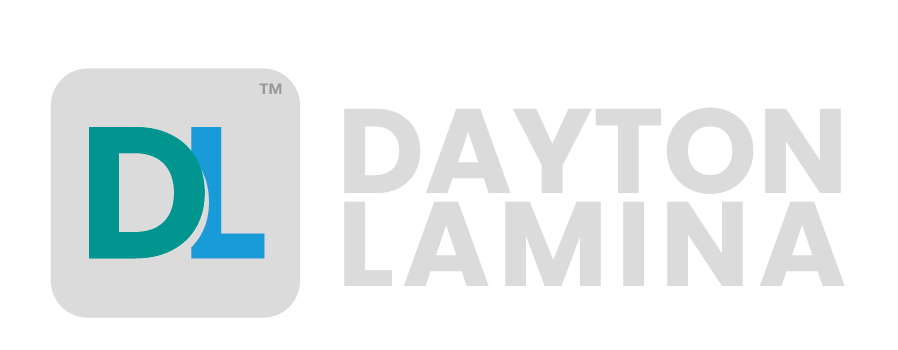Solutions for punch wear, breakage, and other problems come from both time-tested techniques (e.g., adding a larger-than-normal radius under the head) as well as consideration for a wide range of leading-edge engineering solutions (e.g., head alterations) and specialty coatings designed to maximize the life of the punch.
This troubleshooting guide can help you determine the cause for your broken, chipped, or worn punches. It can also help you select the best solution—including Dayton products and services.Punch Chipping & Point Breakage
| Cause | Solution | Dayton Products & Services |
| High impact or compressive failure | Change punch materials | Dayton Versatile M2 & PS4, Ball Lock PS4, or TuffPunch® PS4 |
| Change to a larger body diameter punch | ||
| Change from a Jektole® to solid punch | ||
| Use guide bushings | Dayton Versatile product line | |
| Misalignment resulting in lateral forces | Check for worn guide pins & bushings—replace, if necessary | |
| Check for loose gibs in the ram of the press | ||
| Check overall die alignment | ||
| Part material movement | Use gas or spring-guided stripper | Dayton MaxLife® Die Springs |
| Use a retainer or punch-mounted stripper | Dayton DAYStrip® or SMARTStrip™ Urethane Strippers | |
| Poor material control | Review die, press, & feeder setup | |
| Excessive stripping force | Increase punch-to-die button clearance | Dayton clearance testing service |
| Reduce punch-to-die entry | ||
| Coatings to add lubricity | Dayton coatings | |
| Back taper on punch point “B” | ||
| Polish punch point | Dayton VersaPlus® products | |
| Punch point hardness too low | Verify hardness is minimum of 60 RC | Request technical assistance from Dayton to insure proper RC hardness |
| Punch point “B” too long | Reduce point length “B”, if possible | Contact Dayton Regional Manager |
| Improper punch material selected | Change punch material | Dayton Versatile M2 & PS4, Ball Lock PS4, or TuffPunch® PS4—use technical assistance request form |
| Sharpening damage | Use flood coolant and proper sharpening techniques | |
| Use correct speed & feed for grinding wheel—correct grinding wheel for steel type | ||
| Regrind burr | Remove regrind burr—break sharp corners on punch face | |
| Tight die clearance | Increase clearance | Dayton clearance testing service |
| Change punch material | Dayton Versatile PS or PS4, Ball Lock PS4, TuffPunch® PS4, or VersaPlus® punch | |
| Coatings/surface treatments | Dayton coatings | |
| Use guided stripper | ||
| Sharp corners on shaped punches | Increase clearance in the corners of die button | Dayton “L” or “K” punch |
| Flat punch face | Use shear angles | Dayton XS20 or XS21 on round & shaped punches |
| Engineered edge break | ||
| Improper heat treatment | Check catalog RC specification | Use technical assistance request form for metallurgical heat treat check |
| Triple tempered for high-speed tool steels | Dayton’s in-house heat treatment monitored by staff metallurgist | |
| Cryogenics | Dayton’s in-house heat treatment monitored by staff metallurgist | |
| Punch RC wrong for application | Lower RC hardness | Contact Dayton Regional Manager |
| Improper punch stagger | Stagger should be less than the burnish length of the part material | Contact Dayton Regional Manager |
| Cut-off operation & large point punches first to enter | ||
| Improper finish on punch point and/or punch face | Insure there are no harsh grinding or turn marks on the punch point and/or punch face | Contact Dayton Regional Manager |
| Grinding burn on punch point | Purchase punches from ISO certified source | |
| Part material above 85,000 PSI | Change punch material | Dayton Versatile PS4, Ball Lock PS4, or TuffPunch® PS4 |
Slug Jamming
| Cause | Solution | Dayton Products & Services |
| Tight die clearance | Increase die clearance | Dayton clearance testing service |
| Excessive land length | Reduce land to 1-4 times stock thickness | Dayton XB alteration |
| Change relief from counter bore to taper | Dayton Versatile & Kommercial Die Buttons | |
| Taper in the land of the die button | Verify there is no reverse taper in the land of the die button | |
| Inadequate taper relief in die button | Increase per side taper | Dayton XAR alteration |
| Worn die button | Sharpen, replace, and/or change die button material | Dayton M2 or Versatile PS |
| Worn or chipped punch | Sharpen or replace punch | |
| Rough land in die button | Use die buttons with smooth wire cut, or ground land | |
| Slug tipping | Use shear angle on punch and/or check punch-to-die alignment | Dayton XS20 or XS21 on round or shaped punches |
| Check lubrication—consider lubricating both sides of part material | ||
| Use a Jektole® punch with a side vent hole | Dayton’s Jektole® punch | |
| Obstruction in slug relief hole | Examine slug path | |
| Increase the size of the relief hole in lower plate | Contact Dayton Regional Manager |
Slug Pulling
| Cause | Solution | Dayton Products & Services |
| Bellmouth wear in die button | Increase die clearance | Dayton clearance testing service |
| Check alignment | ||
| Change die button material | Dayton M2 or Versatile PS | |
| Punch entry too deep | Use slug control system | Dayton XSC slug control |
| Reduce punch entry | Contact Dayton Regional Manager | |
| Punch entry not deep enough | Increase punch entry | Contact Dayton Regional Manager |
| Excessive die clearance | Reduce die clearance | Dayton clearance testing service |
| Use a Jektole® punch with a side vent hole | Dayton’s Jektole® punch | |
| Slug not held in the land | Use slug control system | Dayton XSC slug control |
| Use vacuum slug sucker | ||
| Blow air through center hole in punch | Dayton XK alteration | |
| Check lubrication | ||
| Demagnetize punch | ||
| Use negative taper in land | ||
| Rough up land | ||
| Bellmouth the cutting edge of the die button | Dayton form die button W910 & W920 | |
| Not enough relief on die button | Increase taper relief or use counter bore die button | Dayton XAR alteration |
Punch Wear and/or Galling
| Cause | Solution | Dayton Products & Services |
| Tight die clearance | Increase die clearance | Dayton clearance testing service |
| Coatings/surface treatments | Dayton coatings | |
| Change punch materials | Dayton Versatile M2 & PS4, Ball Lock PS4, TuffPunch® PS4, or VersaPlus® | |
| Punch entry too deep | Reduce punch entry | |
| Misalignment | Check die & press alignment | |
| Regrind burr | Remove regrind burr—break sharp corners on punch face | |
| Improper sharpening of punch | Use flood coolant, and correct grinding wheel speed & feed for steel type | |
| Improper punch material | Change punch materials | Dayton Versatile M2 & PS4, Ball Lock PS4, TuffPunch® PS4, or VersaPlus® |
| Sharp corners on shaped punches | Increase clearance in the corners of the die button | Dayton “L” or “K” punches |
| Punch surface too rough | Punch finish improvements | Contact Dayton Regional Manager |
| Lack of lubrication on part and/or incorrect lubrication | Check lubrication | |
| Prepainted & coated part material | Increase die clearance to accommodate powdering & flaking |
Punch Head Breakage
| Cause | Solution | Dayton Products & Services |
| Punch pumping | Verify head thickness is properly fit in the retainer counter-bore | Dayton “TT” alteration |
| Insufficient chamfer in retainer | Chamfer retainer to clear head fillet on punch | |
| Backing plate too hard | Draw back backing plate to reduce hardness—RC 40-50 | |
| Head is too hard | Draw back head of punch to lower RC | Dayton draw heads RC 40-55 |
| High impact or high compressive load on head | Use shear angle on punch point | Dayton XS20 or XS21 on round or shaped punches |
| Increase head diameter and thickness | Dayton TuffPunch® products | |
| Increase shank diameter | ||
| Radius under head too small | Minimum radius should be .010 |

